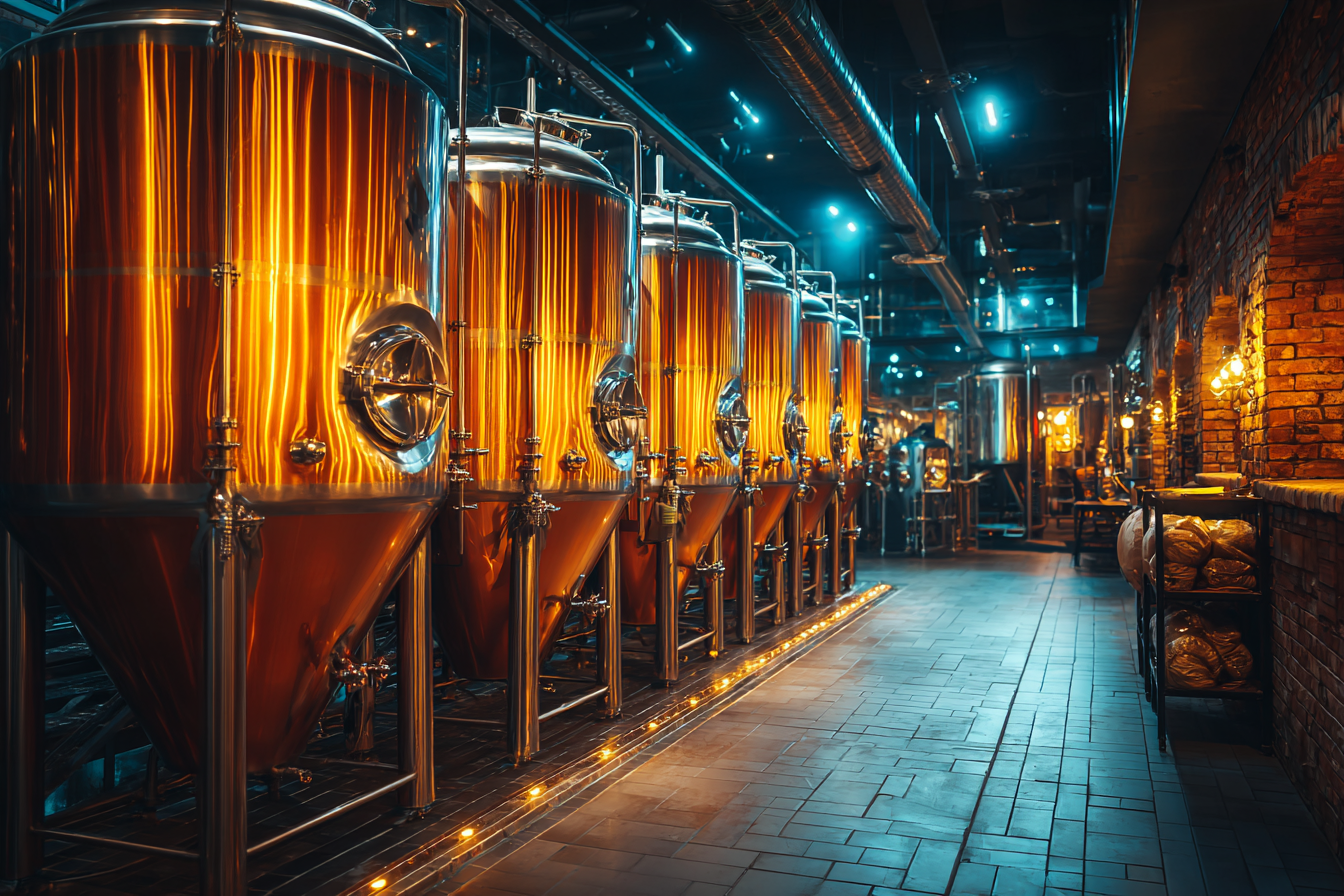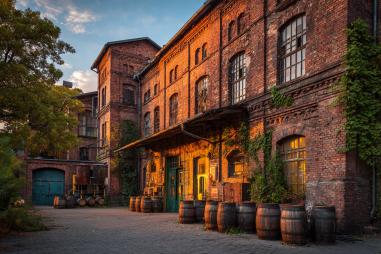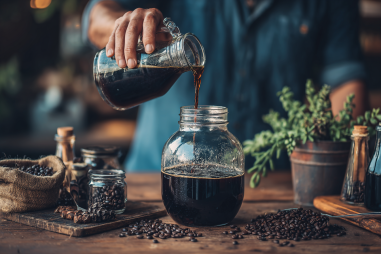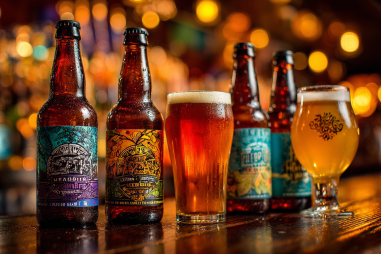Baltic Porter is a unique and robust beer style that captivates beer lovers with its deep flavors, smooth mouthfeel, and complex aroma profile. At the heart of crafting this distinguished brew lies the art of fermentation—a delicate dance of yeast, temperature, and time that defines the beer’s character. Unlike traditional porters that are typically ales, Baltic Porters undergo lager-style fermentation, which contributes to their clean yet rich taste. In this article, we will dive into the fermentation techniques that make Baltic Porter truly exceptional, examining everything from yeast strains to aging methods and how each step influences the flavor and depth of this classic style.
Yeast Strains Used for Baltic Porter
The choice of yeast is critical in brewing Baltic Porter, as it directly impacts both fermentation behavior and flavor profile. Unlike many porters that employ top-fermenting ale yeast, Baltic Porters rely on lager yeast strains, specifically Saccharomyces pastorianus. This yeast operates at lower temperatures and ferments more slowly, producing a beer with cleaner profiles and less fruity esters. The cleaner yeast character allows the malt complexity and roasted notes to shine through without overwhelming yeast-derived flavors.
Some brewers may experiment with hybrid strains or incorporate specific lager yeast variants to emphasize subtle esters while maintaining the lager’s smoothness. However, the cornerstone remains a bottom-fermenting lager yeast that works optimally between 8°C to 12°C (46°F to 54°F). This yeast choice creates the smoothness and depth typical of Baltic Porter, making it an ideal fungus for this style.
Lager vs Ale Fermentation in Baltic Porter Production
Baltic Porter sits at a fascinating crossroads between ale and lager brewing methods. While porters are traditionally ales fermented at warmer temperatures using top-fermenting yeast, Baltic Porters employ lager fermentation techniques. The difference between ale and lager fermentation processes is primarily temperature and yeast behavior, which profoundly affect the final beer.
In ale fermentation, yeast ferments quickly at warmer temperatures (around 18°C – 22°C) producing more fruity esters and phenols that create lively, sometimes spicy, aroma profiles. Conversely, lager fermentation occurs at cooler temperatures (usually 8°C – 12°C), slowing yeast activity and leading to a cleaner and crisper taste. This method reduces off-flavors and allows malt and roasted elements to take center stage.
Baltic Porter benefits from the lager fermentation approach by developing a balanced, smooth, and refined flavor profile. The slower fermentation also encourages a longer yeast attenuation, contributing to the beer’s dry finish despite the rich malt body, making the final product both complex and highly drinkable.
Temperature and Time Considerations
Temperature control is one of the most critical aspects in brewing Baltic Porter. Since lager yeast prefers cooler conditions, fermentation is typically carried out between 8°C and 12°C (46°F and 54°F). Maintaining these stable temperatures ensures the yeast works efficiently without producing undesirable esters or off-flavors.
Fermentation time is usually longer than in ale production—often lasting 2 to 4 weeks. This extended duration allows the yeast to fully attenuate the wort sugars, leaving behind a clean, well-rounded flavor. After the primary fermentation, the beer often undergoes a cold conditioning or lagering phase that can last several weeks to months at near-freezing temperatures. This process helps mature the beer, dissolve harsh compounds, and enhance smoothness.
The combination of temperature and time creates an environment where the complex malt profile melds seamlessly with yeast characteristics, producing the signature depth and smoothness Baltic Porter is known for.
Effects on Flavor and Aroma Development
The fermentation techniques used in Baltic Porter have a significant impact on the beer’s flavor and aroma profile. The use of lager yeast at cooler temperatures generally suppresses the estery and phenolic compounds commonly found in ales, resulting in a cleaner, more malt-forward character.
This allows the rich, roasted malts, caramel undertones, and hints of chocolate or coffee to shine without being overshadowed by yeast-derived flavors. Additionally, the long fermentation and maturation phases develop an intricate complexity characterized by subtle sweetness balanced with a firm bitterness from roasted grains.
While the primary aromas tend to be malt-centric, some bakers of Baltic Porter skillfully coax out nuanced flavors such as dark fruit notes (plums, raisins), licorice, and gentle smokiness. These layers come from the controlled fermentation environment paired with the quality of malt and hops used.
Maturation and Conditioning Phases
Maturation, often called conditioning or lagering, is the integral final stage in Baltic Porter fermentation. After the primary fermentation completes, the beer is stored at cold temperatures, usually near 0°C (32°F), for several weeks or even months.
During this conditioning phase, several important processes occur:
- Flavor mellowing: Harsh or sharp flavors present after fermentation soften, resulting in a smoother taste.
- Carbonation balancing: Natural or forced carbonation equilibrates, enhancing mouthfeel and drinkability.
- Clarity improvement: Sedimentation clears yeast and particulate matter, producing a visually appealing beer.
- Complexity development: Chemical reactions between malt compounds deepen flavor layers, imparting subtle nuances.
This slow, steady cold aging is essential for Baltic Porter to achieve its renowned richness and velvety texture. Skipping or shortening this phase can result in a rougher, less balanced beer, making patience a brewer’s virtue.
Common Fermentation Challenges
Crafting a perfect Baltic Porter through fermentation is not without challenges. Some common issues brewers encounter include:
- Temperature fluctuations: Inconsistent temperatures can stress yeast, causing off-flavors or stalled fermentation.
- Underattenuation: If fermentation prematurely halts, residual sugars may leave the beer overly sweet or heavy.
- Diacetyl presence: This buttery off-flavor is a risk in lager fermentations if the yeast doesn’t fully clean up metabolites during conditioning.
- Ale yeast contamination: Baltic Porters use lager yeast, but contamination with ale yeast can produce unwanted fruity esters inconsistent with the style.
- Date and oxygen exposure: Extended aging or poor storage can cause stale or oxidized notes, dulling flavor complexity.
Careful yeast management, precise temperature control, and patience during lagering are necessary to overcome these hurdles and produce a smooth, complex Baltic Porter.
Unlocking Baltic Porter Complexity with Fermentation
Fermentation techniques wield tremendous influence over the personality of Baltic Porter. The use of lager yeast, slower cooler fermentation temperatures, and extended maturation are what set it apart from other porters, creating its hallmark clean yet richly layered profile. Each factor—from yeast strain to conditioning length—plays a role in balancing roasted malt flavors with smoothness and subtle complexity.
For brewers, understanding these fermentation dynamics is key to mastering Baltic Porter. And for beer enthusiasts, this knowledge enriches appreciation of each velvety sip, revealing the craftsmanship behind this storied style. When done properly, fermentation unlocks the depth, smoothness, and flavor that define Baltic Porter’s enduring appeal.







